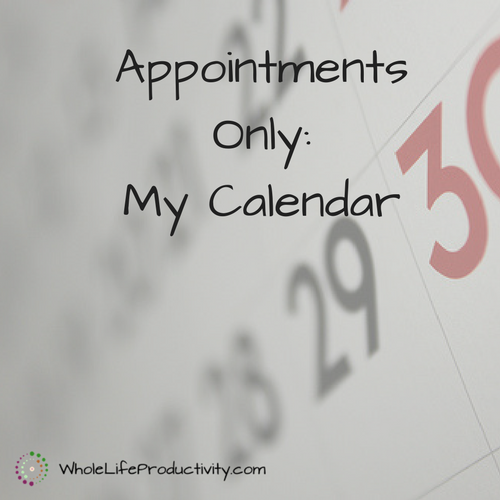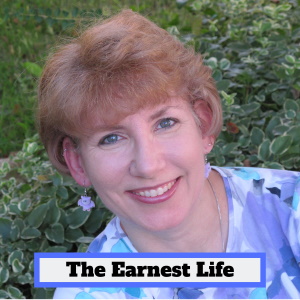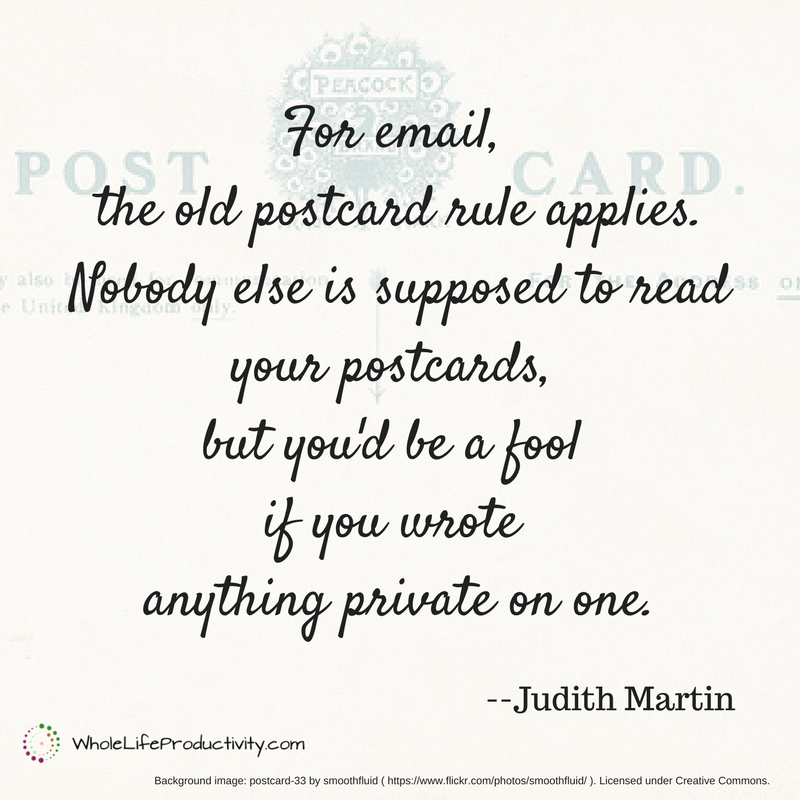
Appointments Only: My Calendar
During August I am giving an in-depth look at my personal productivity system. These are they tools that help me get things done. In the first article, I talked about the basic tools. The calendar part of the system is Google Calendar. Today I’ll talk more about how I interact with Google Calendar.
Why Google Calendar
Google calendar was my calendar system of choice because Outlook requires that you buy Office, which is not cheap, and the main reason: Outlook hates me and does everything in its power to chew up my schedule.
I also chose Google Calendar because it is free, I can have multiple private calendars, can share calendars with others, and have read-only access to calendars (like schools, sports teams, etc). It also links nicely with my email program (GMail) and allows me to create calendar entries by a click from an email.
How I Use It
I’ve said it before, but it bears repeating. I only put appointments on my calendar. These are items and are date and time specific, and usually include other people.
I do not put tasks, notes or emails in my calendar. These items are not date/time appointments; keeping them in the calendar only ensures I will never be able to find the information again.
I view my calendar as a framework which defines the boundaries of the time I have to get stuff done. When I look at my day, these are the big rocks that I must be aware of before putting the smaller rocks of my tasks in.
Inputs
There are two ways that I get information to my calendar: paper and email.
When I make an appointment with someone (doctor, dentist, hairdresser) I always get a paper card. This is because I cannot put appointments into my calendar with any accuracy at a good speed. So I get the appointment card, and these get entered into my calendar during my weekly desk time.
When I am making a more informal appointment, such as lunch with a friend or a committee meeting, I either ask the person involved to send me an email, or I send myself an email. This puts the appointment into GMail, where I can simply click to enter it into my calendar.
Using the Calendar Information
But I don’t use just the Google Calendar. When I am on my computer, I use the Google interface. But elsewhere it is my source, but I use various tools to display and interact with it.
Why Fantastical
On my phone and tablet, I use a program called Fantasical. This interacts seamlessly with Google Calendar. I chose this rather than the built-in calendar because it will show me a weekly agenda in a list. I can see exactly what is on every day without having to click. It’s a big list, and I can scroll through the week and see everything on every day. This is much better than seeing the little + on the edge of the calendar.
Why Paper Calendar
I also use a paper calendar for the family in the kitchen. This, in spite of the fact that my daughter and husband have Google Calendars of their own and they’re all linked. I used to hear “but I didn’t know I had to be at [insert name of event]” While I am slowly training them both to look at the calendars on their phone, it is still a good reminder to all of us to have the paper calendar.
I use the Boynton Mom’s Family Calendar* because it presents a column for each person in the family, and it is easy to see what each person is doing every day. The calendar hangs on the door that we use to go in and out of the house in the kitchen. I update this calendar once a week as part of my upcoming week review.
Summary
I use Google calendar because it is
- Free
- Gives me multiple calendars
- Allows me to share calendars
- Gives me access to school, sports and organization calendars
I use Fantastical to access my calendar on the go because it allows me to see the calendar as a scrolling list.
I use the Boynton Mom’s Family Calendar* as a non-tech version of the calendar that hangs on our door.
Conclusion
Is your calendar easy to use? Do you have processes in place that make it easy to put in information? Can you see information without being afraid you’re not seeing it all? Share your comments below.
Image by DafneCholet. Licensed under Creative Commons. Text added.


